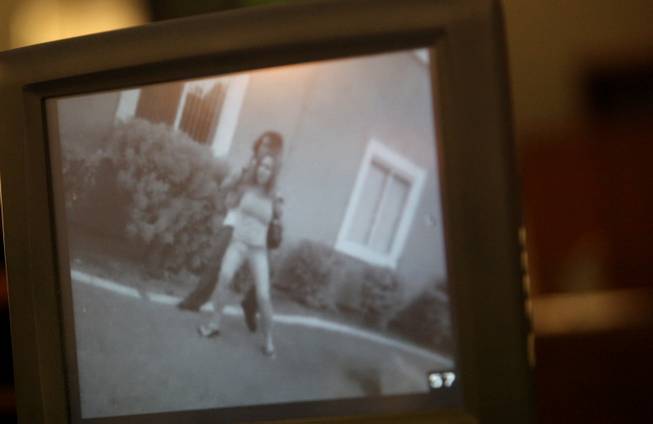
Video of the incident involving Tanner Chamberlain and his mother is shown Friday in front of a Clark County coroner’s jury. Chamberlain was shot by a Metro Police officer on Sept. 29.
Published Friday, Nov. 6, 2009 | 10 a.m.
Updated Friday, Nov. 6, 2009 | 4:04 p.m.
Sun Archives
A Clark County coroner's jury ruled this afternoon that a Metro Police officer was justified in the fatal September shooting of a 15-year-old Chaparral High School student.
Tanner Chamberlain was shot in the head shortly after 5 p.m. on Sept. 29 at an apartment complex at 4855 East Vegas Valley Drive, near Nellis Boulevard. Police said they responded to a report of a possibly mentally ill person with a knife. When they arrived, police said, they found Tanner holding a knife to the neck of his mother, Evie Oquendo.
Officer Derek Colling shot Tanner in the head after officers weren't able to get a clear shot with a Taser.
One of the officers who responded had a Taser in his hand. That Taser had a video camera attached to it, and video of what it recorded was played for the jury.
In it, the black-and-white footage shows a woman being dragged by a man who had an arm around her. She stumbles. As she loses her footing, a shot is heard.
Colling, who pulled the trigger, testified about the events leading up to the shooting and said he had no other choice but to shoot Tanner in the head.
“She said, ‘don’t shoot him, don’t shoot him,’ but he had a knife to her neck and I truthfully believed he was going to kill her,” he said.
Tanner was ducking behind his mother, using her as a shield and moving her around in front of him, at all times keeping her between himself and the officers. As he was dragging her and she lost her footing, he saw his opportunity to “end this situation and save her life,” he said. “I fired one shot.”
He said several times throughout his testimony that he was certain that Tanner was going to kill his mother with the knife.
“The whole time, he had this look on his face like he was going to kill her,” he said.
When asked why he didn’t aim for his arm or leg, Colling said that wasn’t an option.
“Any other shot wouldn’t have stopped the threat. The only shot I had was to shoot him in the head,” he said.
A wound elsewhere on his body could still have left him able to stab her in the neck or slit her throat, he said.
“I did what had to be done,” he said.
In a taped statement given to police after the incident, Oquendo told police her son was mentally ill and wasn’t being medicated.
That statement was played for the jury today. In it, a distraught Oquendo says Tanner is bipolar and manic-depressive, and that he had been having an episode. He hadn’t gone to school that day, she said.
A doctor had prescribed medication for Tanner but he refused to take it, she told the officer. He hadn’t had an episode since May and had never been violent with her.
“He lost it today and now his little life is over,” she says in the audiotape, crying. “He’s sick. He just went nuts. And now he’s gone.”
She told the officer that Tanner had been destructive in their home, where they had lived for about a week. She called her sister, a police officer who lives out-of-state, for advice on how to handle him. Her sister told her that police would know how to handle people who were mentally ill and that she should call them for help. Oquendo said her sister then called police for her.
Oquendo wasn’t in the courtroom today but Tanner’s aunt and uncle were present, said Chris Owens, a deputy district attorney who questioned some of the witnesses.
Dr. Gary Telgenhoff, a forensic pathologist in the coroner’s office who conducted Tanner’s autopsy, testified that he had a slight level of an anti-anxiety drug in his system when he died. His mother said in her statement that he had taken 10 pills prescribed to her in an effort to “spite her.”
Telgenhoff said Tanner died from a single gunshot wound to the right of the head and that the death was ruled a homicide.
It was up to the jury to decide if the homicide was justifiable, excusable or if it was a homicide by criminal means. Eight jurors heard testimony and one alternate was excused from deliberations.
Oquendo has been critical of how police handled the situation, saying her life never was in danger.
A folding knife with a 3-½ inch blade was recovered after Tanner was shot.
Detective Joel Kisner testified that during his investigation, several knives were found in the home. Items throughout the home had been damaged or destroyed: A television was smashed in, glass figurines in the living room were shattered and the glass on some of the paintings hanging on the walls had been broken.
Kisner said there was damage in the common areas of the apartment as well as in Oquendo’s room, but that Tanner’s room remained orderly.
“The focus of his attack, of his anger, appeared to be his mother,” Kisner said.
Colling’s partner, Manuel San Martin, is the officer who had a Taser.
“I told him many times, ‘drop the knife, calm down,’” San Martin testified. “He didn’t respond to my commands.”
He said he heard a shot, the boy fell and he took the mother away from the scene.
“My primary concern was for the safety of the victim,” he said.
He said he was unable to use the Taser on Tanner because of how the boy had been holding his mother. Not only could San Martin not get a clear shot, but Tanner kept guiding his mother toward a wall and San Martin couldn't get behind the boy, he said.
Sgt. Stephen Mauri’s testimony backed that up: “It was more likely that a Taser would have hit the mother than the suspect,” he said.
Additionally, there was a danger that the boy’s muscles could have tensed and, with the knife at her throat, that could have caused her serious injury, he said.
When asked if a Taser would have been the appropriate weapon in that situation, Mauri replied, “Absolutely not.”
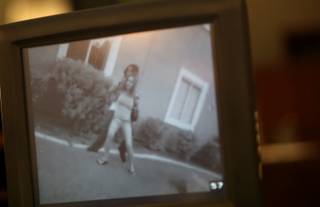
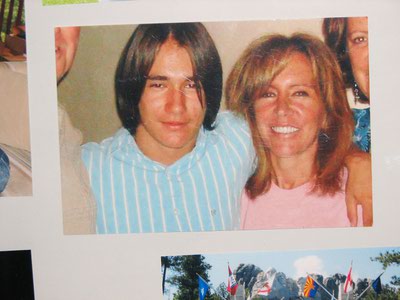
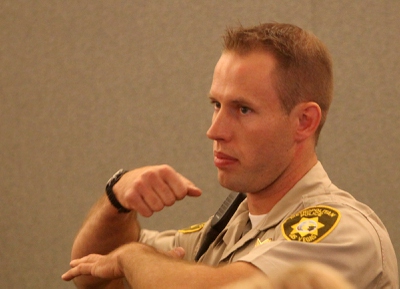


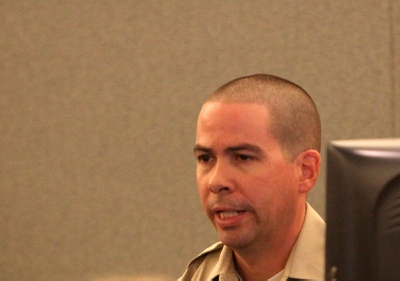


Join the Discussion:
Check this out for a full explanation of our conversion to the LiveFyre commenting system and instructions on how to sign up for an account.
Full comments policy